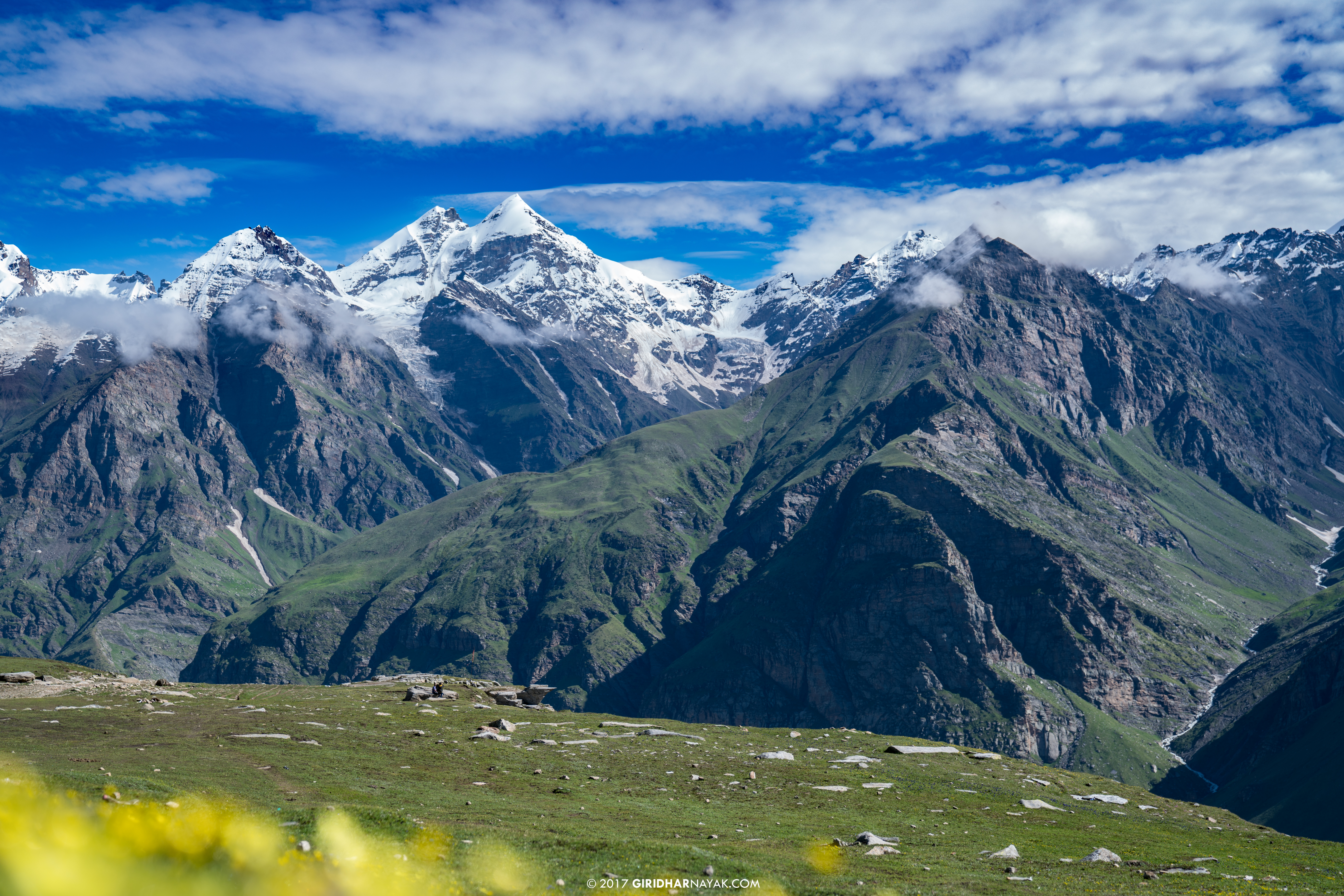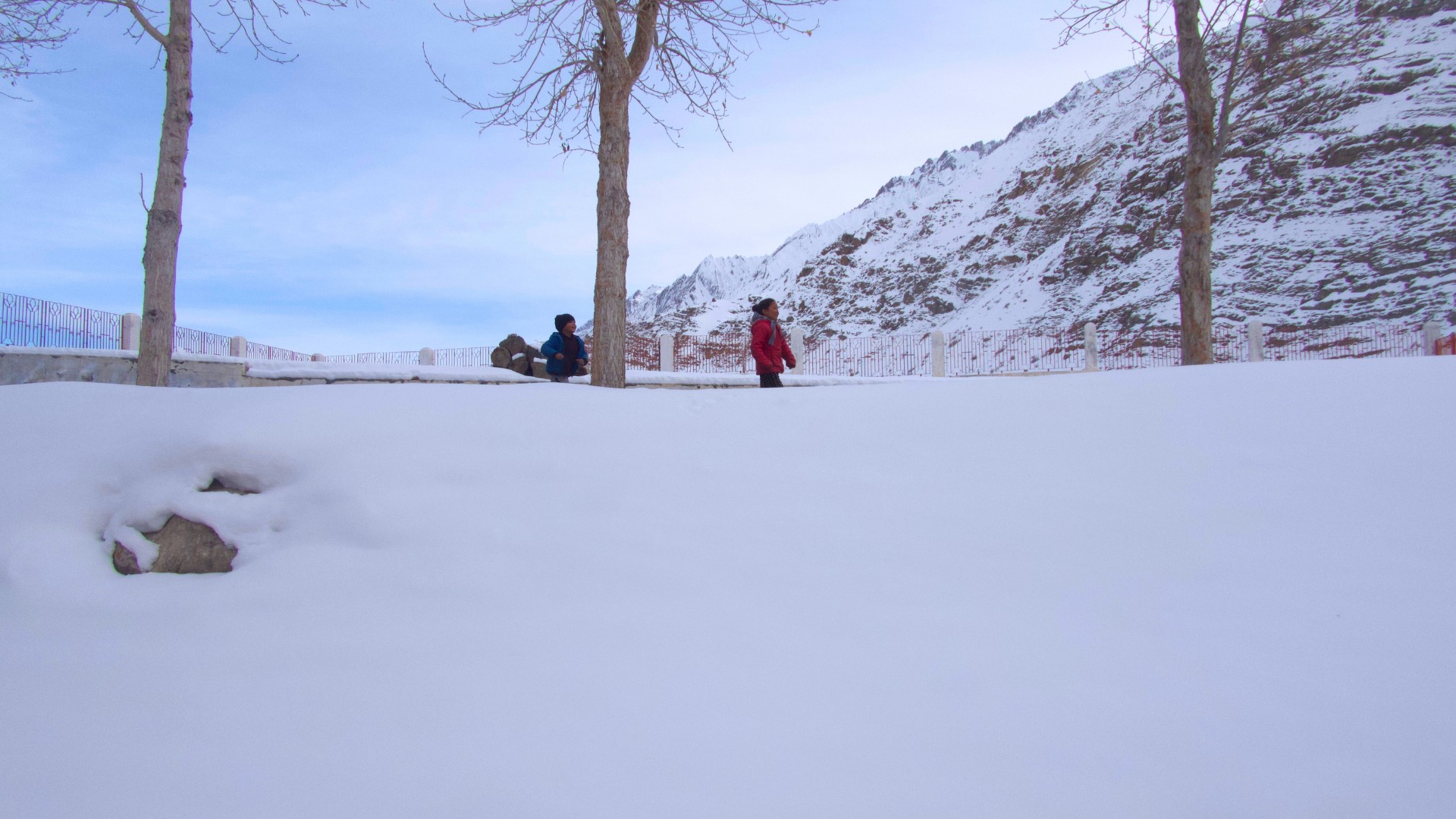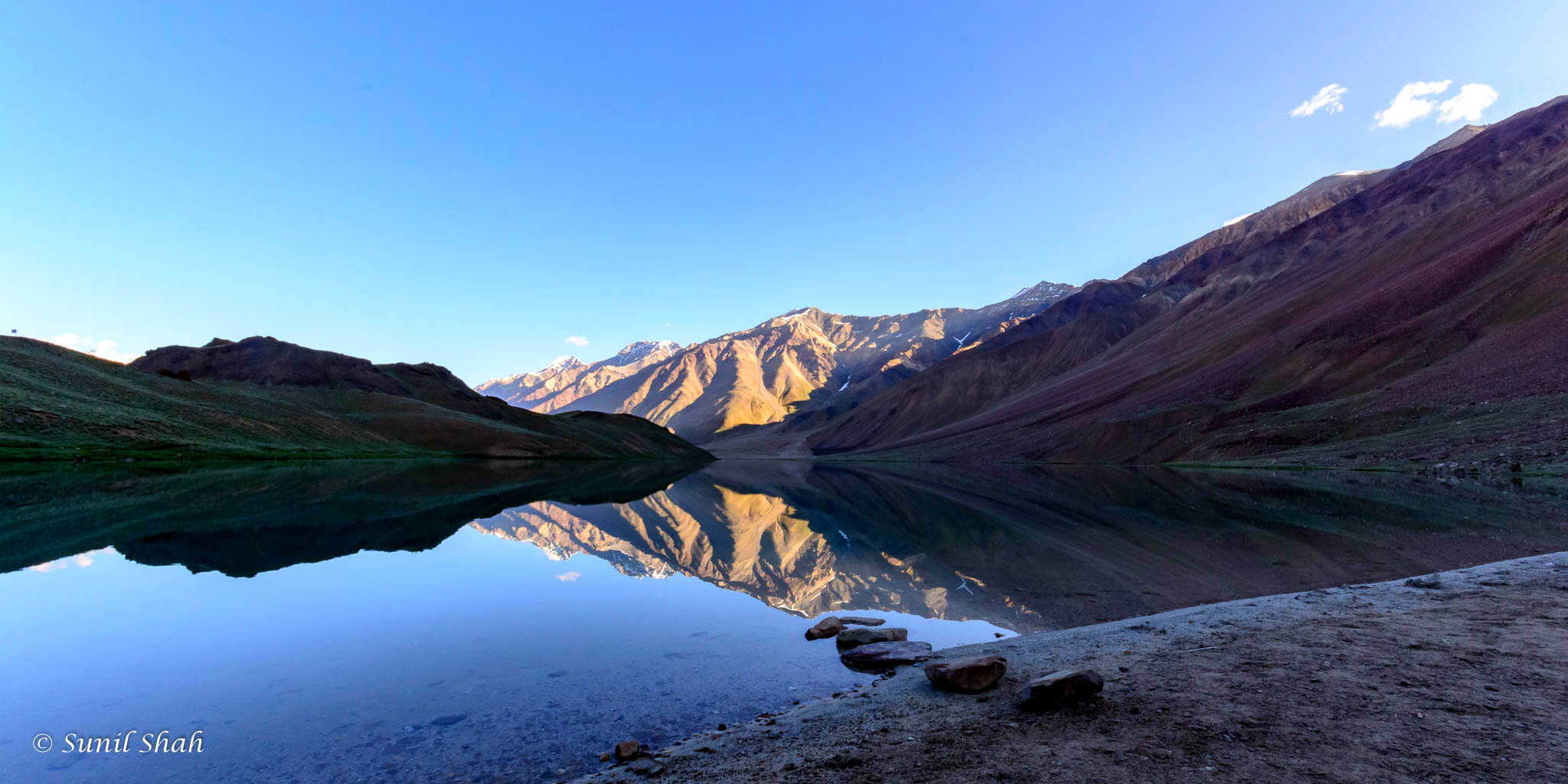There’s a moment when you first see the mountains, and everything just pauses. The noise of the world fades, your worries seem smaller, and all that’s left is the awe of nature’s grandeur before you. For many, this moment marks the beginning of a lifelong love affair with the mountains. So, If this is your first time visiting, be prepared to fall in love.
This guide is here to help you fully embrace your mountain adventure. We’ll show you how to travel, soak in the simplicity and spirituality of the mountains, and create memories that last. So pack your curiosity and wonder, and let the mountains work their magic.
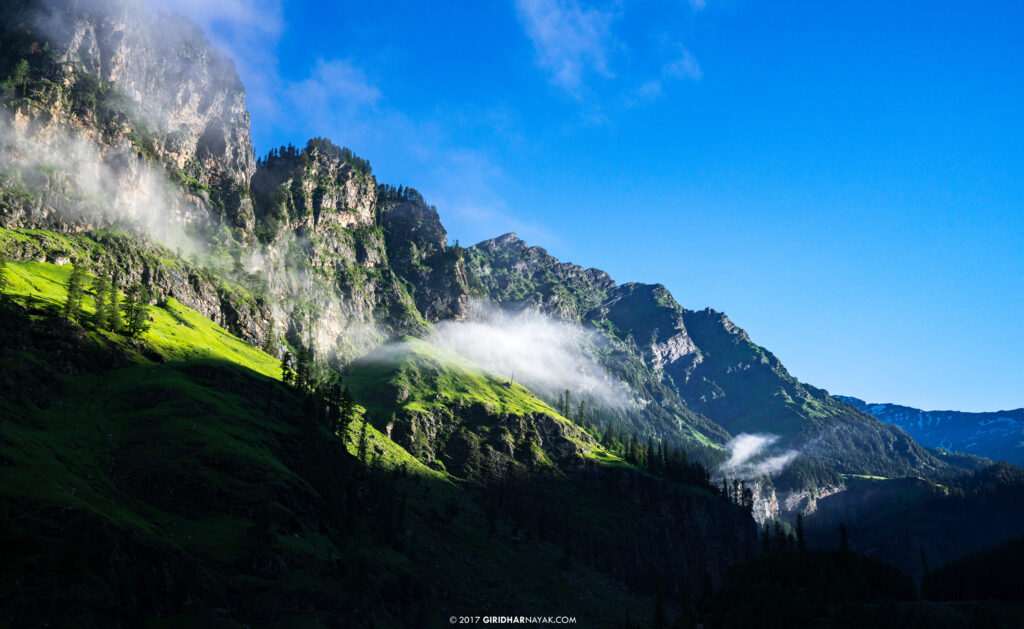
What to Pack for Your First Mountain Trip?
The mountains can be unpredictable, with chilly mornings, warm afternoons, and sudden rain showers. The key is layering – start with something light, add a cozy sweater, and top it off with a waterproof jacket. This way, you’re ready for anything the day throws at you.
Comfortable shoes are a must. Whether you’re strolling through Shimla’s streets or hiking in Manali, sturdy footwear will keep you going. And don’t forget the essentials: sunscreen, sunglasses, and a good hat to protect against the stronger sun at higher altitudes. A reusable water bottle is also crucial – staying hydrated is key up here.
Additionally, packing a torch is wise, especially if you’re staying in areas with limited lighting or if you plan on doing early morning or late evening hikes. Bring your camera or smartphone to capture those breathtaking views, and throw in a portable charger to keep it powered.
Lastly, don’t forget toilet paper. Many remote mountain areas may not have fully equipped restrooms, and having your own supply ensures you’re prepared for any situation.
But beyond all the essentials, be ready to leave your creature comforts behind. In the mountains, you might face patchy phone signals, lack of network coverage, or even basic facilities like toilets. The beauty of mountain life lies in its simplicity and unpredictability. So, embrace the opportunity to disconnect, go with the flow, and fully immerse yourself in the moment—you’ll find that this simplicity adds a special richness to your adventure.
How to Make the Most of Your Journey to the Mountains?
As you set off on your journey to the mountains, the excitement of what lies ahead begins even before you reach your destination. The drive itself is an adventure, winding through scenic routes that offer glimpses of the majestic peaks and lush valleys. Instead of rushing, take your time and soak in the views along the way.

Make a point to stop at roadside dhabas for a cup of chai and local snacks – it’s a simple pleasure that’s hard to beat. These small eateries often serve up some of the best, most authentic food you’ll find, and it’s a great way to break up the drive. Plus, it’s in these moments that you start to feel the rhythm of mountain life, where things move a bit slower, and every pause is an opportunity to connect with the surroundings.
As you travel, keep an eye out for hidden gems – small villages, serene viewpoints, or quiet temples that aren’t on the typical tourist trail. Ask your driver or guide for their recommendations; they often know of spots that aren’t on any map but are well worth a visit. These little detours can turn an ordinary drive into something truly memorable.

However, it’s important to plan to reach your destination before sunset. Traveling at night in the mountains should be avoided as much as possible. More often than not, you find yourself on unfamiliar trails, and without streetlights to guide you, navigating in the dark can be more dangerous and stressful. Daylight travel is not only safer but also allows you to fully appreciate the beauty around you.
And don’t forget to listen to the stories. Whether it’s a tale from your driver about a local legend or a conversation with someone at a roadside stall, these stories add a richness to your journey that you won’t find in guidebooks. They give you a deeper sense of the place and the people who call these mountains home.
Top Mountain Destinations for First-Time Explorers
For first-time visitors, the key is to find destinations that offer both accessibility and a true taste of what mountain life is all about. Places like Shimla, Manali, Dharamshala, and others in Himachal are perfect for this. They provide a gentle introduction to the mountains, blending natural beauty with cultural richness, and just the right amount of adventure.
Check out our Shimla-Manali Tour Package or our Dharamshala-Shimla-Manali Package for a well-rounded experience.
Shimla: The Colonial Charm
Shimla is often called the “Queen of Hills,” and for good reason. This town is ideal for first-timers because it combines stunning mountain views with a rich colonial history. The well-maintained roads and facilities make it easy to explore without the ruggedness that some other mountain destinations might present.

Incredible Spiti Pro Tip: Shimla’s traffic can be a real headache, especially during peak season. So, The best way to explore Shimla is on foot. Not only will you dodge the jams, but also get to wander through narrow lanes, discover hidden cafes, and enjoy the scenic spots that are easily missed when driving.
Start with a leisurely stroll along the Mall Road, which gives you a taste of Shimla’s colonial past while also offering plenty of spots to sit and soak in the views. The Kalka-Shimla toy train, a UNESCO World Heritage site, is a must-do. This slow, scenic journey lets you acclimatize to the mountain pace and marvel at the lush landscapes without any rush.
For a bit of adventure, the hike to Jakhoo Temple is accessible even for beginners. It’s not too strenuous, but it rewards you with panoramic views of the town and surrounding peaks. Plus, it’s a fun way to get a little more active without feeling overwhelmed.
To explore Shimla and its surrounding areas, consider our Himalayan Retreat Manali-Tirthan-Shimla Package.
Manali: The Gateway to Adventure
Manali is another great choice for first-time mountain visitors because it offers a mix of natural beauty and gentle adventure. The town itself is easy to navigate, with plenty of accommodations and amenities that cater to travellers who might be new to the mountains.

Old Manali, with its relaxed, bohemian vibe, is the perfect spot to ease into mountain life. The narrow lanes lined with traditional wooden houses and riverside cafes invite you to slow down and enjoy the laid-back atmosphere. It’s the ideal place to unwind, soak in the scenery, and adjust to the altitude at your own pace.
For a more bustling experience, head to Mall Road, where you can dive into the city vibe, shop for souvenirs, and take in the lively energy of the local markets. When you’re in the mood for a bit of history and local architecture, the Hidimba Devi Temple and Vashisht Temple are must-visits, offering a glimpse into the region’s rich cultural heritage.
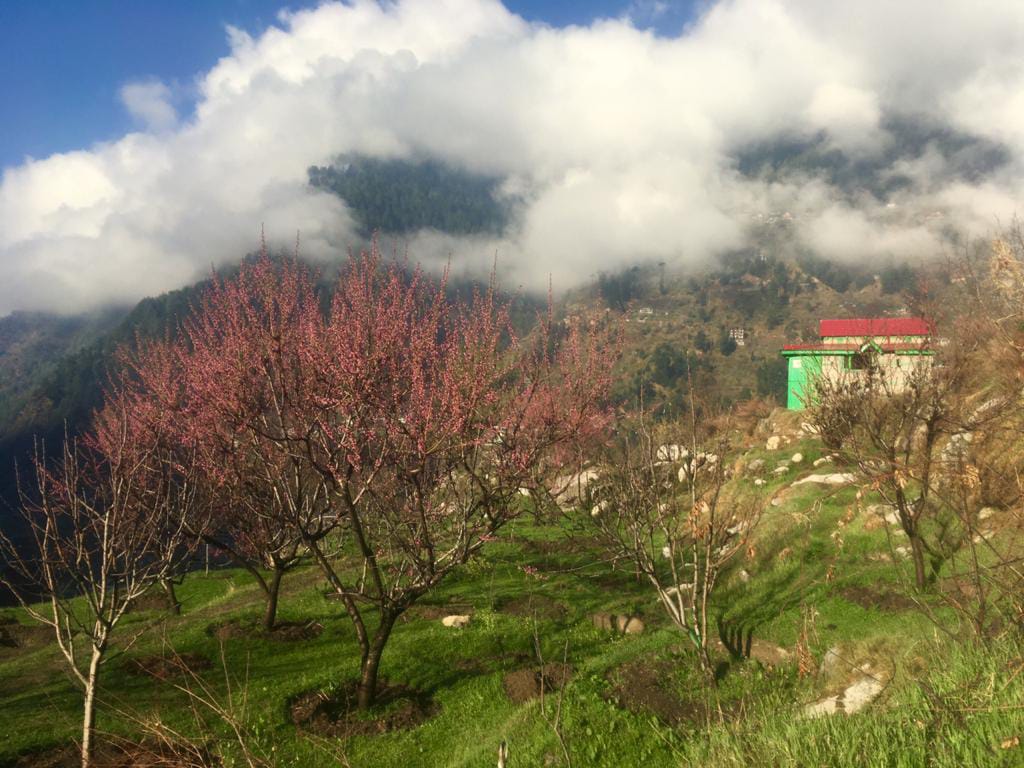
If you’re seeking a bit of excitement, the Jogni Waterfall hike provides a refreshing adventure with stunning views along the way. Solang Valley is another great option for those looking for a thrill, offering paragliding and other adventure sports against a backdrop of breathtaking landscapes.
For a touch of history and culture, Naggar Castle and the Roerich Art Gallery offer a window into the region’s past, with the castle’s ancient architecture and the gallery’s collection of art and artifacts adding depth to your visit.
Incredible Spiti Pro Tip: While in Naggar, don’t miss the chance to visit Jana Waterfall and treat yourself to a local Himachali thali at Maniram Dhaba. It’s a hidden gem that offers an authentic taste of Himachal’s culinary heritage amidst beautiful surroundings.
Dharamshala: The Spiritual Retreat

For first-time visitors, McLeod Ganj is the perfect place to start soaking in the vibrant culture of Dharamshala. Begin by exploring the lively streets filled with unique shops and cozy cafes—McLeod Ganj is the heart of Dharamshala, and it’s where you’ll find the soul of this place. Make sure to visit the Dalai Lama’s residence and the Tibetan Museum to get a sense of the rich history and cultural significance of the region. Afterward, head to the Bhagsu Nag Temple, a serene spot steeped in history, and follow it up with a walk to the nearby Bhagsu Waterfall. This easy hike offers a peaceful escape and a refreshing break in nature.
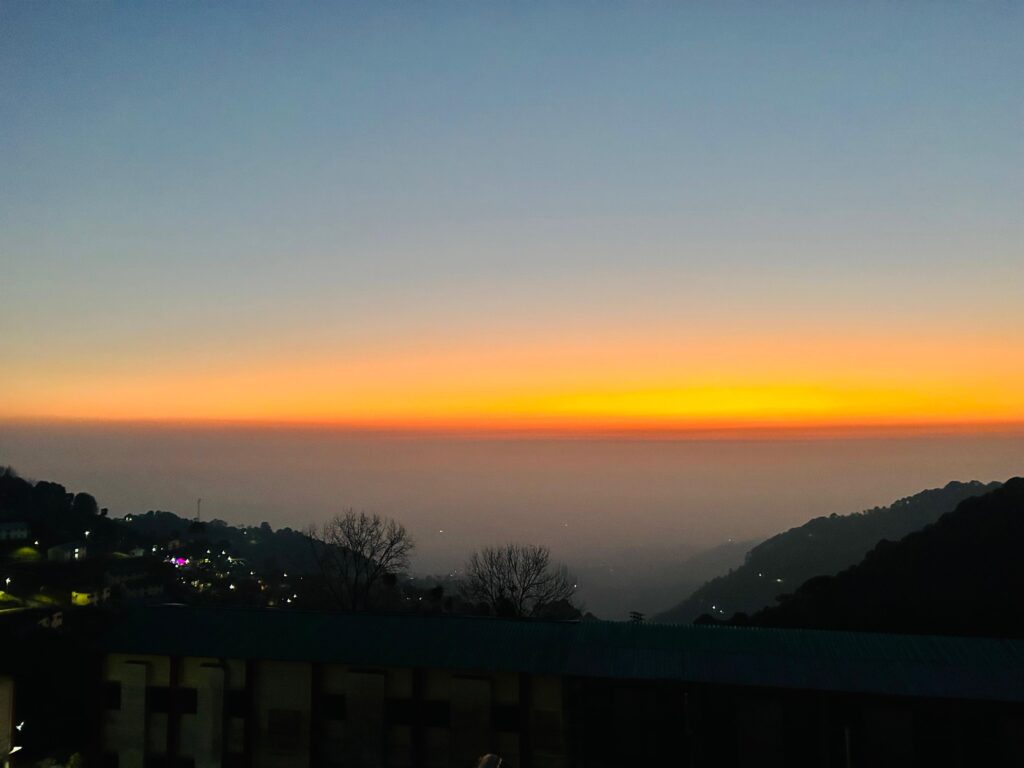

As you make your way down to Dharamshala, the lower part of town, the International Cricket Stadium is a must-see, even if you’re not a cricket enthusiast. The stadium, set against the breathtaking backdrop of snow-capped peaks, is a sight to behold. For a touch of history, visit St. John in the Wilderness Church, an 18th-century neo-Gothic gem surrounded by towering deodar trees—perfect for a moment of tranquility.

If you’re eager to connect more deeply with Tibetan culture, the Norbulingka Institute is a must-visit. Sign up for a workshop, and you’ll learn how to create beautiful thangka paintings, pottery, and other traditional arts. It’s an experience that connects you deeply with the culture of this region.
Incredible Spiti Pro Tip: Consider taking a guided tour with a local expert. They can offer you insights into the cultural aspects of the area that you might otherwise miss, making your experience richer and more meaningful.
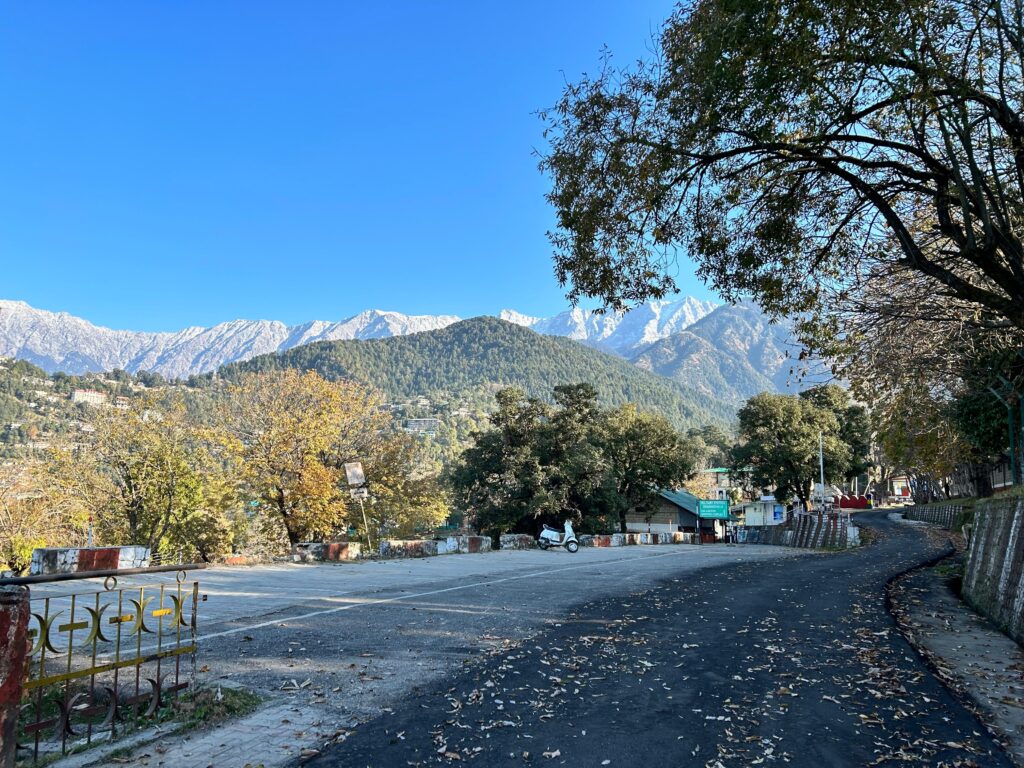
Bir Billing: The Paragliding Paradise
Bir Billing, known as the paragliding capital of India, offers a unique combination of adventure and tranquility. It’s an ideal destination for first-time mountain visitors who want to experience outdoor adventure while soaking in the serene beauty of the mountains.
The small town of Bir is perfect for unwinding, with its peaceful monasteries, vibrant cafes, and stunning views of the surrounding valleys. For adventure seekers, the paragliding experience from Billing to Bir is a must-do. It’s a gentle introduction to the sport, with trained instructors ensuring your safety as you glide over the picturesque landscape.
Incredible Spiti Pro Tip: While most visitors come to Bir for paragliding, don’t miss the chance to explore its spiritual side. Visit Chokling Monastery for its serene atmosphere and Palpung Sherabling Monastery nestled in lush forests. Take some time to meditate or simply enjoy the tranquillity these sacred spaces offer.
Dalhousie: The Colonial Retreat
Dalhousie, with its colonial charm and breathtaking views, is another great destination for those new to the mountains. The town is known for its old-world charm, with British-era buildings, churches, and scenic trails that are easy to explore.
One of the highlights of Dalhousie is the walk to Panchpula, a popular picnic spot with waterfalls and a memorial to the freedom fighter Sardar Ajit Singh. The route is easy and perfect for beginners, offering beautiful views of the surrounding hills. Another must-visit is the Khajjiar meadows, often referred to as the “Mini Switzerland of India,” which is a short drive from Dalhousie and offers a serene escape with its lush meadows and dense forests.
Incredible Spiti Pro Tip: While most people visit Khajjiar, we suggest exploring Kalatop Wildlife Sanctuary. It offers the same breathtaking views but with a much more tranquil and serene atmosphere, perfect for those looking to escape the crowd.
Tirthan Valley: The Offbeat Gem
If you’re looking for a more off-the-beaten-path experience, Tirthan Valley is a great choice. It’s a bit more secluded, but still accessible enough for first-timers who are seeking a quieter, more intimate connection with the mountains.

Staying in a riverside homestay is the perfect way to truly immerse yourself in the natural beauty of Tirthan Valley. Most accommodations here are boutique stays, offering limited rooms and serene views of the river, providing a cozy, welcoming atmosphere that’s ideal for easing into mountain life. Whether you’re looking for luxury or traveling on a budget, there’s something for everyone. Jibhi is the most popular part of the region, offering a slightly more commercial experience. If you prefer something quieter, nearby villages like Sarchi and Gushaini offer quaint accommodations where you can unwind in peace.
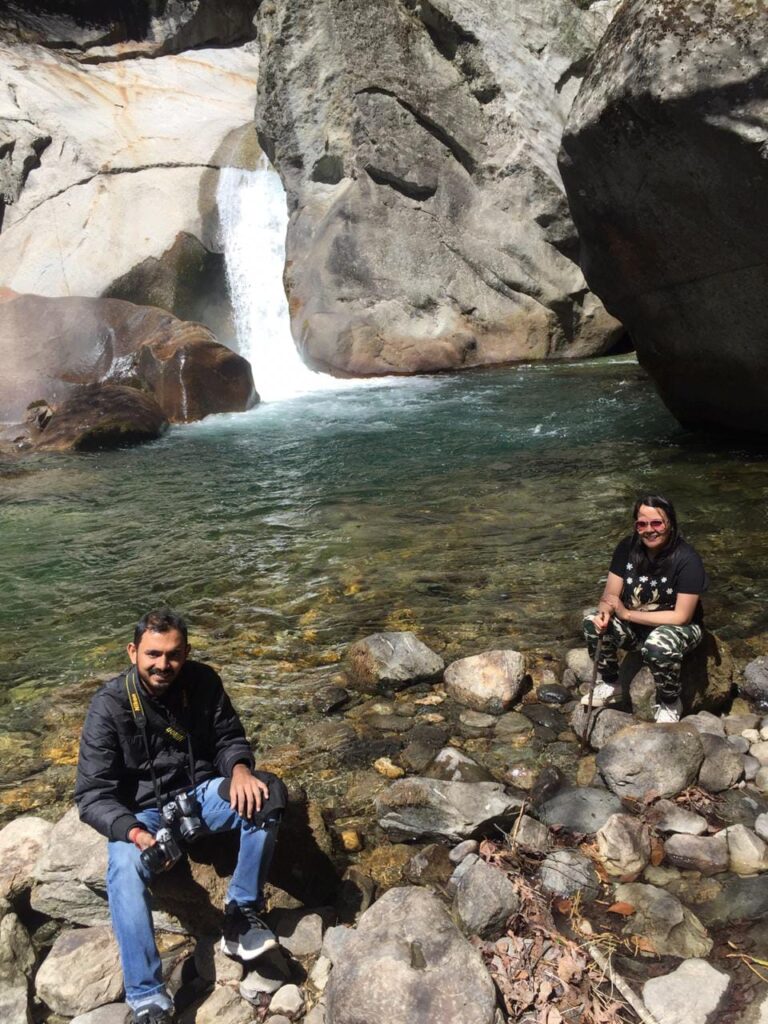
You can spend your days exploring the valley at your own pace, whether that’s through gentle hikes or simply sitting by the river with a book.
The trek to Serolsar Lake is a beginner-friendly hike that offers stunning views without being too challenging. The path is well-marked and the reward – a crystal-clear lake surrounded by mountains – is well worth the effort.
In addition to hiking, trout fishing is another activity you can enjoy in Tirthan Valley. Your tour agency can arrange for a guide, permit, and fishing equipment, making it easy to experience this local tradition. And while you’re here, don’t miss the chance to savor some locally caught rainbow trout—a delicacy that truly reflects the flavors of the region.

Incredible Spiti Pro Tip: Tirthan Valley is a paradise for bird enthusiasts, with its rich diversity of flora and fauna. If you’re into birding, spend a day with a professional birder who can guide you on a hunt for unique bird species native to the region. It’s an incredible way to connect with the natural beauty of Tirthan and discover the valley’s hidden wildlife treasures.
For a full experience of Tirthan Valley, check out our Mountain Magic Tirthan-Lahaul Package.
How to Travel Mindfully in the Mountains?
The mountains have a rhythm, a way of life that’s slower, more mindful, and deeply connected to nature. Embracing this rhythm can transform your journey from a mere vacation into something much more meaningful. Here are some tips to help you travel mindfully and truly connect with the essence of mountain life.

Respecting Nature:
One of the simplest yet most impactful things you can do is to leave no trace. This means carrying back all your waste, sticking to marked trails, and avoiding the temptation to pick flowers or disturb wildlife. The locals live in harmony with their surroundings, and by following these practices, you’ll be doing your part to preserve the natural beauty for future visitors.
Connecting with the Local Culture:
The mountains are home to rich, vibrant cultures, each with its own traditions, languages, and ways of life. One of the most rewarding aspects of your trip can be connecting with this local culture. Even small gestures, like learning a few words of the local language or taking the time to chat with someone at a market, can lead to meaningful interactions.

Eating local food is another great way to immerse yourself in the culture. Whether it’s sampling momos in Dharamshala, savoring fresh trout in Tirthan Valley, or enjoying a simple plate of rajma-chawal in Shimla, food connects you to the place and the people who live there. Visit local eateries instead of sticking to more familiar options – you’ll find that the meals are not only delicious but also tell a story about the region’s traditions and agricultural practices.

Slowing Down:
Take time to enjoy simple pleasures – a quiet morning with a cup of tea, watching the sunrise over the peaks, or listening to the sound of a river flowing by. These moments of stillness are where the magic of the mountains really comes alive.
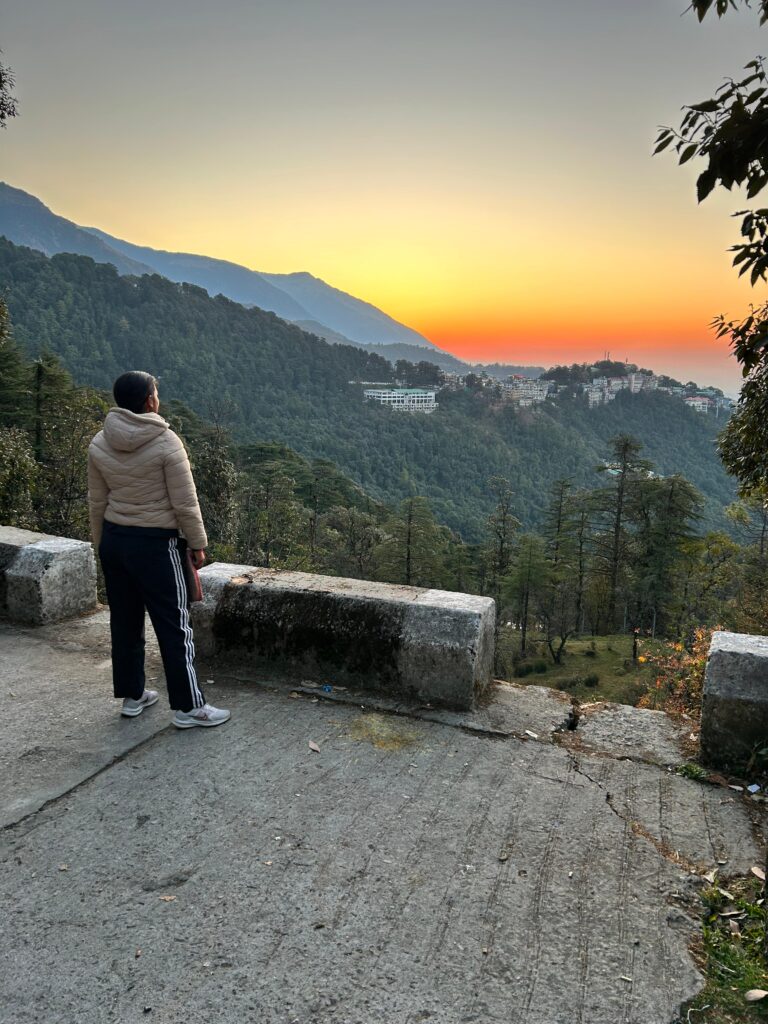
Consider keeping a travel journal during your trip. Writing down your thoughts, observations, and experiences can help you process what you’re seeing and feeling, and it’s a wonderful way to remember the small details that might otherwise fade with time. Plus, it gives you an excuse to sit quietly in a beautiful spot, reflecting on your journey so far.
How to Stay Safe and Healthy in the Mountains
As you venture deeper into the mountains, ensuring your health and safety becomes a top priority. The mountains, while breathtakingly beautiful, can also be challenging, especially for first-time visitors. By taking a few precautions and being mindful of your body’s needs, you can fully enjoy your adventure while staying safe.
Altitude Awareness:
One of the most significant differences between the mountains and the plains is the altitude. As you ascend, the air becomes thinner, and your body needs time to adjust to the lower levels of oxygen. This process is called acclimatization, and it’s crucial for avoiding altitude sickness, which can cause headaches, nausea, and shortness of breath.
To help your body adjust, take it slow when you first arrive at higher altitudes. Give yourself a day or two to acclimatize before engaging in strenuous activities. Stay hydrated by drinking plenty of water throughout the day – dehydration can worsen the symptoms of altitude sickness.
Basic First Aid:
Your kit should include essentials like band-aids, antiseptic wipes, pain relievers, and any personal medications you may need. It’s also helpful to include blister treatment, as hiking in unfamiliar terrain can sometimes lead to sore feet.
If you’re venturing into more remote areas, consider packing a small emergency kit with items like a space blanket, a whistle, and a basic multi-tool. These can be invaluable in case of an unexpected situation.
Local Emergency Resources:
Before heading out on any adventure, familiarize yourself with the local emergency resources. Know the location of the nearest medical facilities and keep the contact information of local emergency services handy. If you’re staying in a hotel or homestay, ask the staff for advice on what to do in case of an emergency – they can often provide valuable local insights.
Respecting Your Limits:
Perhaps the most important tip is to listen to your body and respect your limits. The mountains can be physically demanding, and it’s easy to get caught up in the excitement of exploring new places. But it’s essential to pace yourself and take breaks when needed.
Enjoying the mountain views from a cozy spot with a warm drink can be just as rewarding as a day spent trekking.

Here’s how to Keep the mountains with you, wherever you go.
Integrating the Mountain Mindset:
Whether it’s appreciating a stunning view or simply enjoying a meal in a quiet spot, the mountain mindset is all about savoring the moment. Try to integrate this approach into your life back home. Take time to notice the small details, to appreciate the beauty around you, and to approach each day with a sense of mindfulness. This doesn’t require grand changes – it’s about finding joy in the everyday, much like you did in the mountains.
Sustaining Connections with Nature:
Your connection with nature doesn’t have to end when your trip does. Look for ways to stay connected to the natural world, even if you’re far from the mountains. This could be as simple as taking regular walks in a nearby park, tending to a garden, or planning future trips to explore other natural landscapes. The sense of peace and fulfillment that comes from spending time in nature is something that can be nurtured wherever you are.
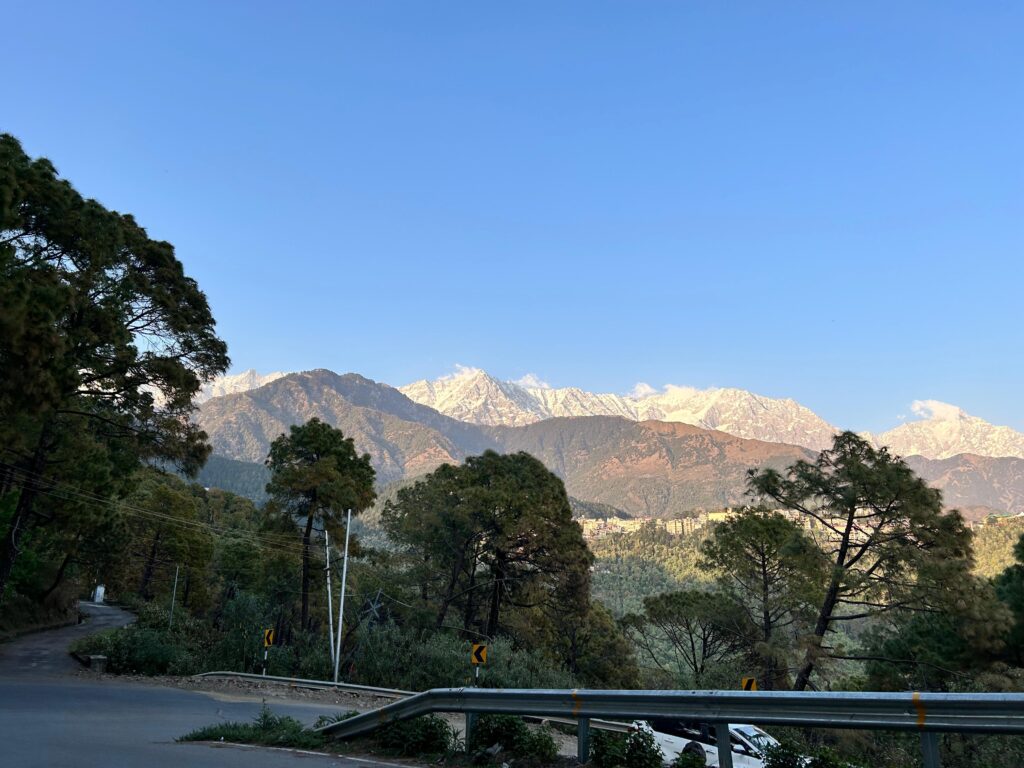
Continuing the Journey:
The mountains often spark a desire to explore more, to see what lies beyond the next peak or valley. Use this inspiration to plan future adventures. Whether it’s another trip to the mountains, a visit to a new natural destination, or even exploring your local area with fresh eyes, keep that spirit of adventure alive. The more you explore, the more you’ll discover about the world and yourself.
Giving Back to the Mountains:
Finally, think about ways you can give back to the places that gave you so much. Whether it’s supporting conservation efforts, donating to organizations that protect mountain environments, or simply spreading awareness about the importance of preserving these natural landscapes, there are many ways to contribute. By giving back, you help ensure that future generations can experience the same beauty and tranquility that you did.

As you transition back to your daily life, remember that the mountains are always there, waiting for you. Whether you return next year or in ten years, the lessons and memories you’ve gained will stay with you.
If you’re thinking about your next adventure in the Himalayas, our Himachal trips are designed to offer a genuine and personal experience of the mountains. Whether it’s your first time or you’re returning for more, we make sure each journey is unique, connecting you with the heart of Himachal’s stunning landscapes and rich culture. Let us guide you to the most beautiful and offbeat places that Himachal has to offer.


